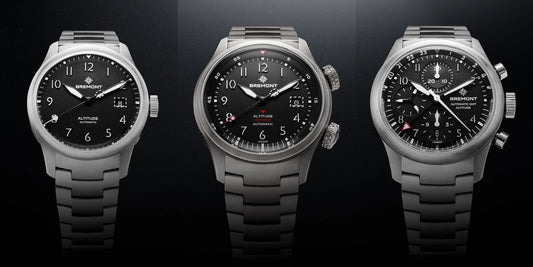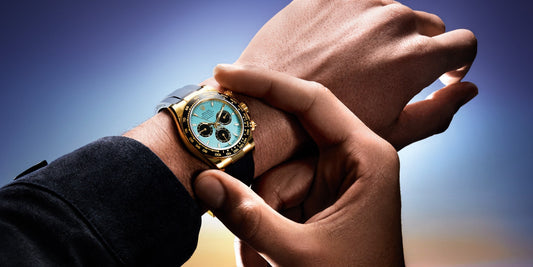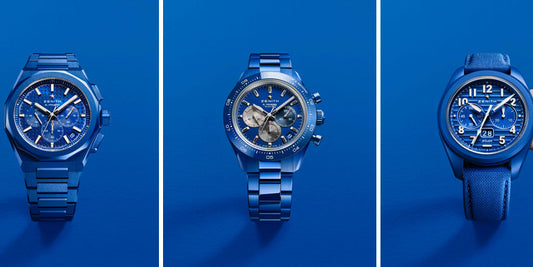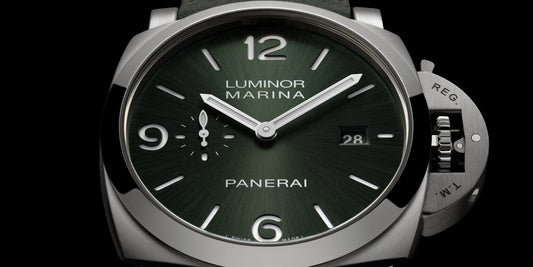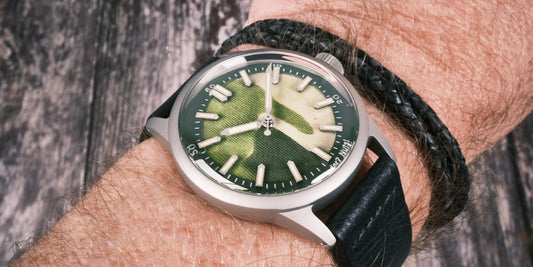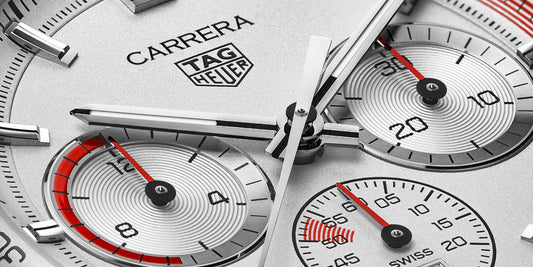Within a culture that values both the new and discardable, a humble community thrives, the Watch Custodian. Beyond their love for horology, they bear the responsibility to protect time itself. This exploration delves into the varied role of watch custodians, examining the stories embedded in watches, their sustainability and the deep connection formed with objects from bygone eras.
 Vintage Omega Dirty Dozen - Credit WatchGecko
Vintage Omega Dirty Dozen - Credit WatchGecko
A Living History on Your Wrist
A watch is so much more than being a mere accessory. It’s a silent recorder of the movement of time, capturing stories of the past. As custodians of watches, we adopt the role of stewards for these narratives. Whether a modern watch or a vintage steeped in history, each watch interlaces us with events, cultures and those shaping our world.
Consider a vintage watch, a delicate heirloom from a different period. It has silently marked the passing of years, bearing witness to historical events, personal milestones and shifts within society. Owning a vintage watch is like inheriting a piece of living history. The scratches on the case, the patina on the dial and the fading lume on the markers, all tell the story of the watches journey through time. Thus, by extension, it’s custodians’ journey.
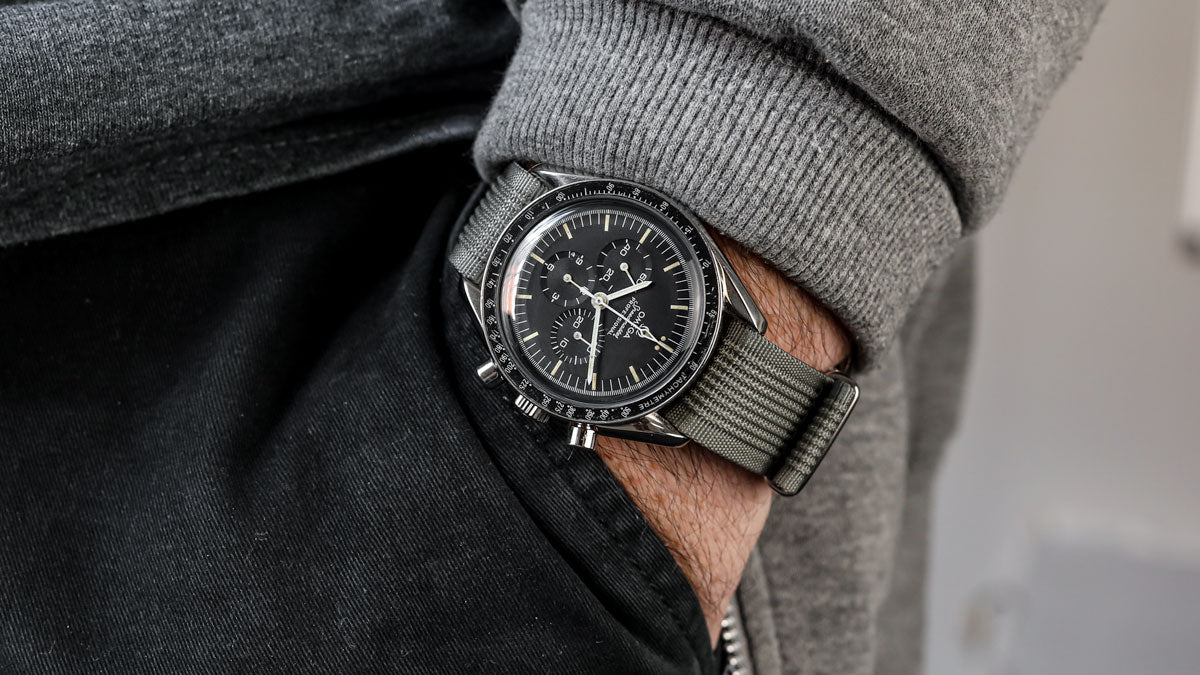 Vintage Omega Seamaster - Credit WatchGecko
Vintage Omega Seamaster - Credit WatchGecko
The Flip Side of a Throwaway Culture
In a time dominated by fast fashion and disposable goods, the watch custodian stands as a beacon of sustainability. Unlike many items in today’s throwaway society, watches are designed to last. A well-made watch, with regular maintenance and care, can last for generations. This longevity is a testament to the commitment of watchmakers, to quality craftsmanship and durability.
The watch industry, fundamentally, supports sustainable practices. The art of watchmaking encourages the use of high-quality materials, precision engineering and timeless designs. Unlike fads that come and go, a classic watch remains relevant, bypassing trends. This resistance to obsolescence is an obvious contrast to the quick paced turnover of consumer goods that define today’s modern society.
What’s more, the concept of planned obsolescence, so widespread in many industries today, is almost non-existent in the world of horology. Custodians often treasure watches that have been passed down through generations, further reducing the environmental impact associated with manufacturing and disposing of new products.
 Rolex GMT Master II - Credit WatchGecko
Rolex GMT Master II - Credit WatchGecko
The Ecological Impact of a Throwaway Society
In contrast to the long-lasting nature of watches, the environmental toll of our throwaway culture is so alarming. Mass production, fast fashion and rapid technological advancements contribute to a staggering amount of waste. Landfills are overflowing with discarded items, many of which are made from materials that take centuries to decompose.
Consider the environmental impact of a Smartwatch, for instance. The fast-paced evolution of technology results in consumers constantly upgrading their devices, leading to a significant accumulation of electronic waste. Smartwatches are only a firmware away from being obsolete. In contrast, a mechanical watch. Carefully maintained, can function for decades, if not centuries, without contributing to the cycle of continuous consumption and disposal.
 Vintage Heuer Triple Calendar 1940 - Credit WatchGecko
Vintage Heuer Triple Calendar 1940 - Credit WatchGecko
The Eco-Efficiency of Owning a Watch
Owning a watch in essence, is a statement against the disposable culture. It’s a conscious choice to invest in an item that not only serves a practical purpose, but also carries intrinsic value and meaning. Watches, particularly those crafted with longevity in mind, embody eco-efficiency. Today’s manufacturers are very aware of their environmental impact, that more and more are using recycled materials to bolster their sustainability.
The embodied energy is the total energy required to produce and maintain a product over its lifetime. This is remarkably low for watches compared to many other consumer goods. In fact, the durability of a watch, contributes to a reduction in the need for constant replacement, as a result, decreasing its overall resource consumption.
 1980’s Heuer Skipper - Credit WatchGecko
1980’s Heuer Skipper - Credit WatchGecko
What’s more, the act of repairing and maintaining a watch promotes sustainable practices. Watch owners often form lasting relationships with the brands directly and skilled watchmakers who specialise in the intricate art of horology. If you own a vintage piece, then no doubt, you will have started that connection with a reputable watchmaker, who will do his/her best to keep that watch running indefinitely. These craftsmen are adept at breathing new life into old watches, emphasising repair and restoration over disposal.
The Counterbalance to Consumerism - An Emotional Bond
Owning a watch, especially one that carries personal or family history, stimulates a unique emotional bond that goes beyond the material nature of the object. This emotional connection serves as a powerful counterweight to the often-disposable mindset kept alive by consumerism.
Unlike the momentary joy you get from a new purchase that quickly loses its shine, the emotional value of a watch tends to appreciate over time. The scratches, dings and imperfections that accumulate on the case become a part of the watches character, telling a story of the wearers experience and adventures. If the truth be known, most of my own collection is filled with such watches. I have a preference of a watch with a story and probably a dent too, there will definitely be an imperfection somewhere. I’m not a lover of show ponies, that look like they have just come out of a safe, although as my tastes mature, I’m sure I will change my mind. In fact, I have only ever only bought one new watch, as everything else in my collection is preowned. This for me is what I love about collecting watches, in fact, it’s history too that I’m collecting.
 Laco Kempten Erbstück - Credit WatchGecko
Laco Kempten Erbstück - Credit WatchGecko
The Maintenance Ritual
Caring for a watch becomes more than just a routine, it becomes a ritual. Regular maintenance involves not only ensuring the timekeeping accuracy but also preserving the aesthetic and functional integrity of the watch. This ritualistic act of maintaining promotes a sense of mindfulness, encouraging custodians to appreciate the craftsmanship and intricate mechanics that make a watch tick.
In a world that prioritises convenience over lasting quality, maintaining a cherished possession is a purposeful decision to prolong its life. It signifies a dedication to sustainable practices, highlighting the importance of valuing what you own instead of constantly opting for new upgrades.
 Laco Kempten Erbstück - Credit WatchGecko
Laco Kempten Erbstück - Credit WatchGecko
The Journey Continues
As watch custodians, we not only preserve that past but also contribute to a more sustainable future. The decision to invest in a watch is a declaration of one’s commitment to quality, durability and a conscious dismissal of the throwaway culture that saturates modern society.
In conclusion, being a watch custodian involves blending personal history, environmental care, and a profound love for craftsmanship. In a world of constant change, where things are often discarded, watches and their custodians symbolize the lasting importance of the past in shaping a sustainable future.






